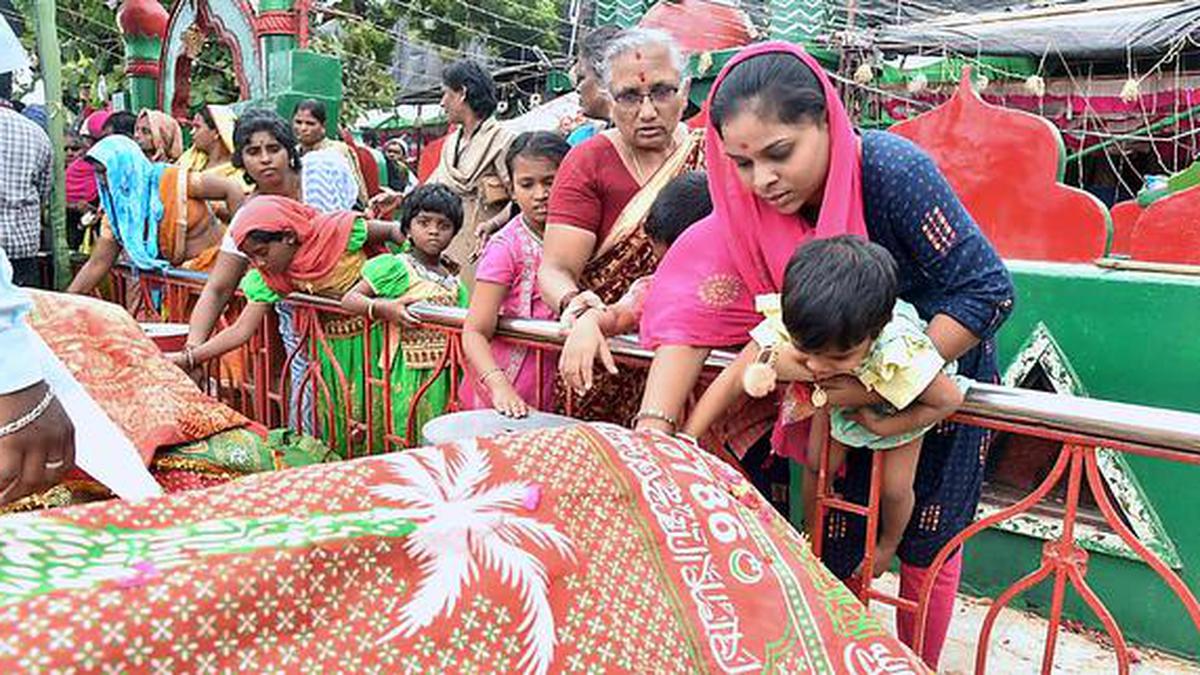
Barashahid Dargah, a tall symbol of communal harmony Premium
The Hindu
Nellore's Barashahid Dargah is a symbol of communal harmony, attracting devotees of all faiths. It was built to commemorate 12 warriors who fought the British forces and is being renovated at a cost of ₹15 crore. During Muharrum, pilgrims from all over India and abroad come to seek blessings and exchange Rotis for their wishes. The practice began in the 18th century when the royal couple of the princely State of Arcot visited the Dargah and the queen was miraculously cured of her illness. The festival is celebrated as a 'State festival' with a 'Gandhamohotsavam' procession.
Barashahid Dargah stands tall as a symbol of communal harmony on the banks of the picturesque Swarnala Cheruvu (Golden water tank) in Nellore, attracting devotees cutting across religious lines, especially during the holy month of Muharrum.
Twelve warriors fighting the British forces turned martyrs, and in their memory, a beautiful Dargah was constructed in veneration in this coastal city, also known as ‘Simhapuri’.
The complex of tombs, which is being given a face-lift at a cost of ₹15 crore, including a Masjid by the State Government, attracts pilgrims not only from all over the twin Telugu-speaking States of Andhra Pradesh and Telangana but also from other parts of the country as well as from overseas for the ‘Rotiyaan Ki Eid’, also known as ‘Rottela Panduga’ in local parlance as their long list of wishes get fulfilled one after another in succession.
The annual Urs has been celebrated for centuries, coinciding with the first month of the Islamic calendar when the death of Prophet Muhammed’s grandson, Hussein Ibn Ali, is commemorated as the latter was brutally martyred during the Battle of Karbala on the tenth day of the month known as the Day of Ashura then.
Nellore formed part of the then princely State of Arcot in the Carnatic region, which rose to prominence after the downfall of the Mughals. The practice of exchanging Rotis was, in fact, started in the 18th century by the royal couple.
Tracing the origin of the practice, which has now assumed a secular tone over a period with believers cutting across religious lines coming from far and near seeking the blessings of the martyred soldiers, Maulvi Ismail Khadri recalls the queen of Nawab of Arcot, who had been ruling Nellore and Chittoor districts along with several districts in the present day Tamil Nadu suffered from serious incurable illness. She got a miracle cure for the disease with the blessings of the martyred souls after visiting the holy precincts.
Happy over the prayers bearing fruit, the royal couple started the practice of exchanging Rotis at the Dargah located in the Dargamitta area by standing in the placid waters of Swarnala Cheruvu. The Shia sect festival of the medieval period gradually gained popularity during the first half of the 20th century. Initially, the Rotis were made with devotion by devotees at their homes and exchanged. With the pilgrims’ rush going up in geometric proportions subsequently, stalls sprung up to make available Rotis to devotees who come to Nellore after travelling long distances. Rotis are exchanged seeking, among other things, health, wealth, prosperity, job, marriage, progeny, house construction and promotion in the workplace.











